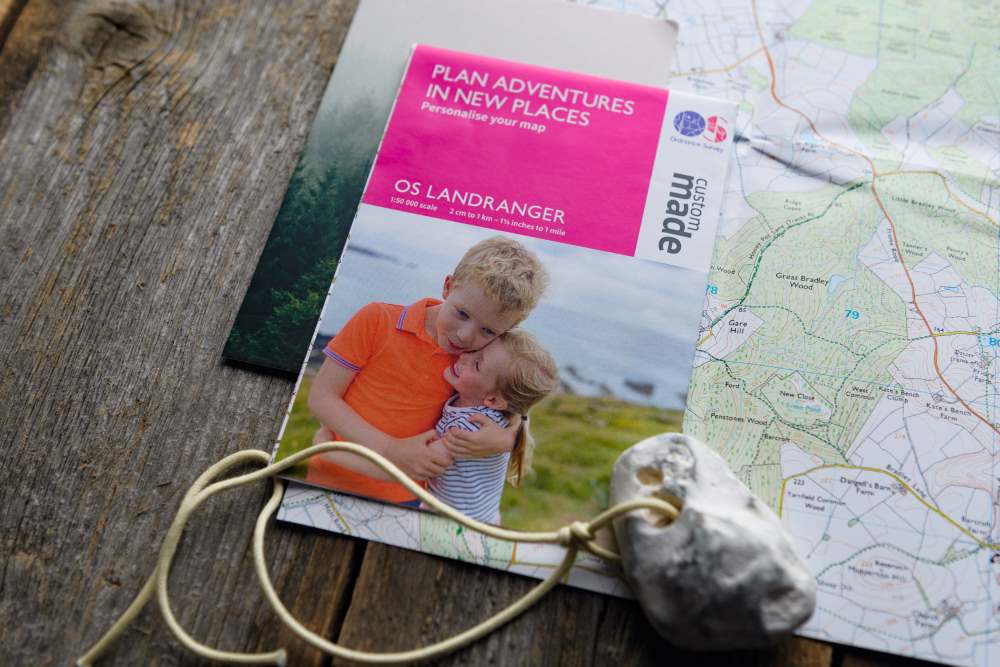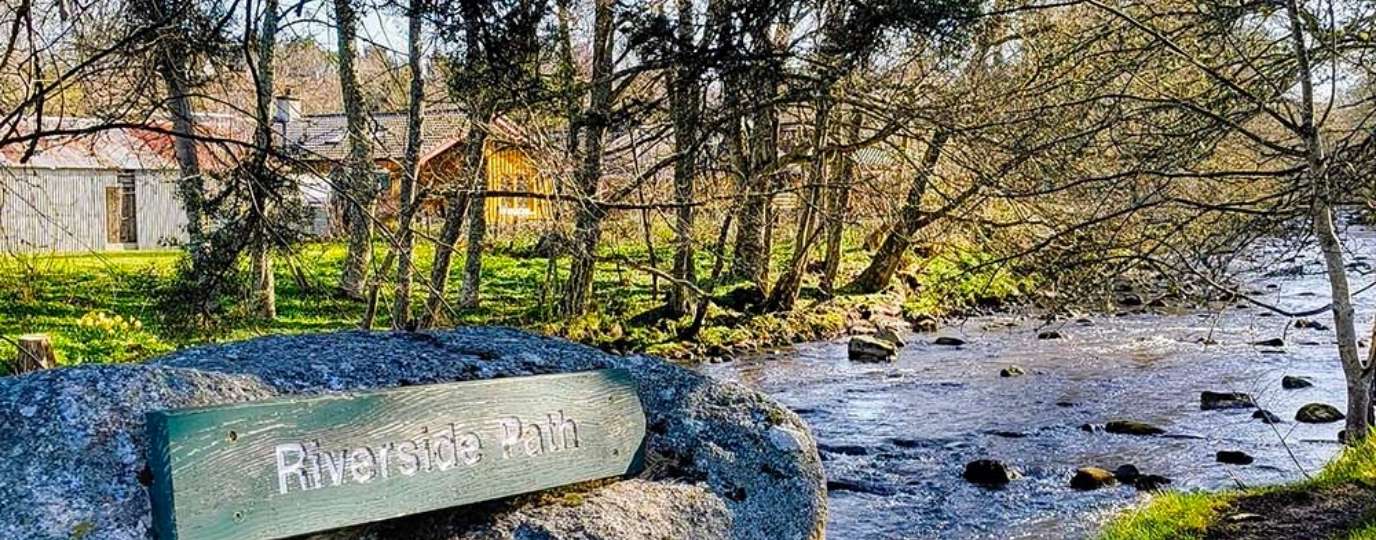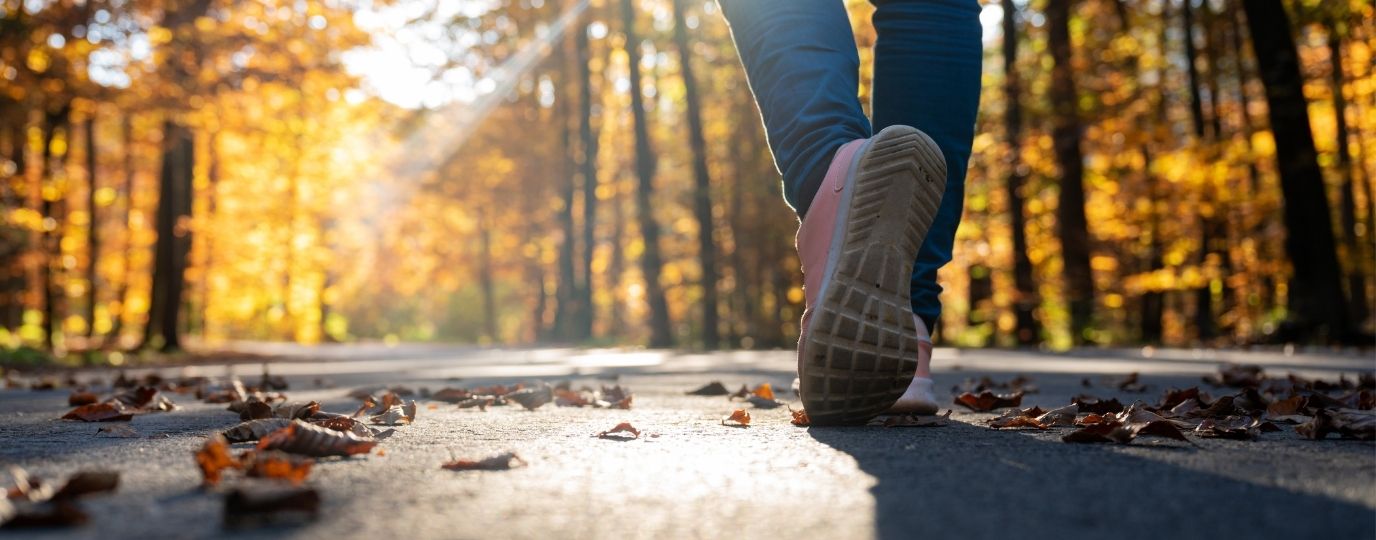What kind of walking socks do I need?
Having the right walking socks will prevent blisters, regulate foot temperature and wick away moisture, helping you extend your favourite walks. This guide from Bridgedale will help you choose the perfect pair to keep your tootsies comfortable all day long.
What makes a good walking sock?
You wouldn’t go out in the freezing cold without a fleece or for run without a baselayer! The choices you make when it comes to deciding on the correct clothing for your day out will help make sure you’re comfortable and equipped for your adventures.
The same amount of thought goes into choosing footwear but how much time goes into choosing the correct sock? Socks play an vital role in keeping your feet dry, warm, and comfortable; they are both base layer and insulation for your feet.
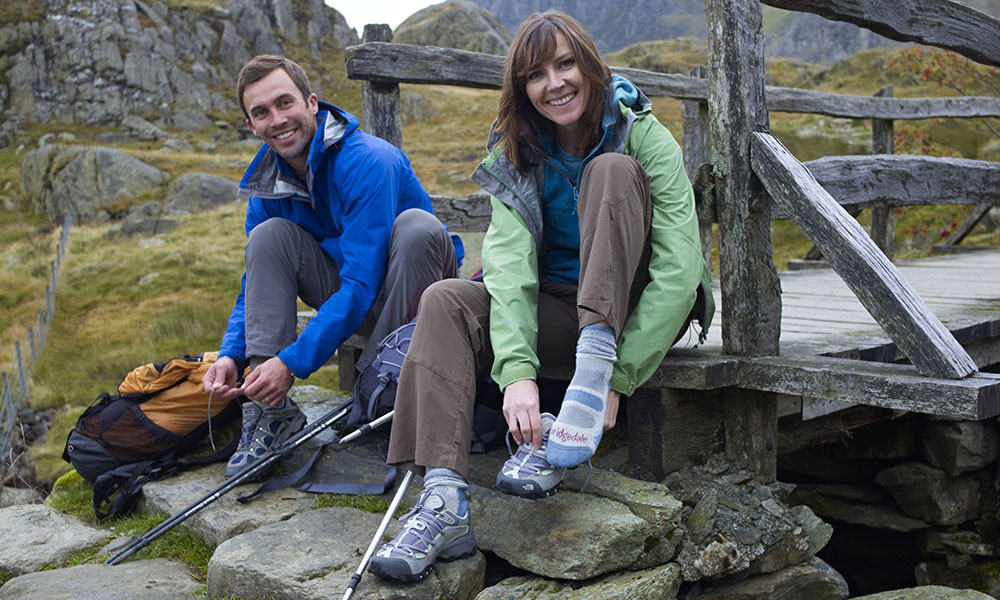
Photo credit: Bridgedale
To choose the best walking socks for your adventure it is important to consider four things:
- Sock height/length
- Sock thickness
- Sock fabric
- Sock Fit
What’s the best walking sock height and length?
Socks come in all sorts of lengths and sizes, some come up to the knee while others barely show above your shoes. The below image shows the different sock lengths.
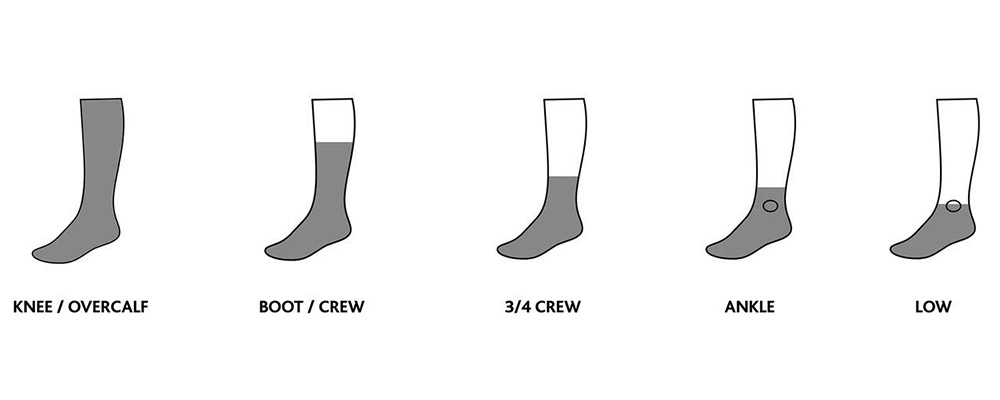
Photo credit: Bridgedale
Choosing the right length for your walking sock is largely based on how tall your footwear is; the higher the cuff on your boots or shoes the longer the sock should be.
There are a few other factors to consider, such as warmth or the conditions (for example, a longer sock helps keep your lower leg warm in winter) but it is important that your socks are higher than your footwear to help protect from rubbing. In socks with a synthetic wicking fabric, this extra height also helps the sock remove moisture from around your feet.
Did you know
Your feet can sweat up to 300ml of moisture in a long day’s walking; that is almost a can of your favourite soft drink

EXPLORE THE
OS Shop
We are with you every step of the way. Shop our trusted walking and hiking maps and guidebooks so you can explore the outdoors with confidence.
Go to the shopHow thick should walking socks be?
Most modern walking socks will be made up of thousands of little loops; you can usually see these loops if you turn them inside out. If you are old enough to remember cloth nappies, then it may remind you of them as the idea came from there. The loops, which are called terry loops (terry towelling), act like tiny springs under your feet and this is where the cushioning in a sock comes from.
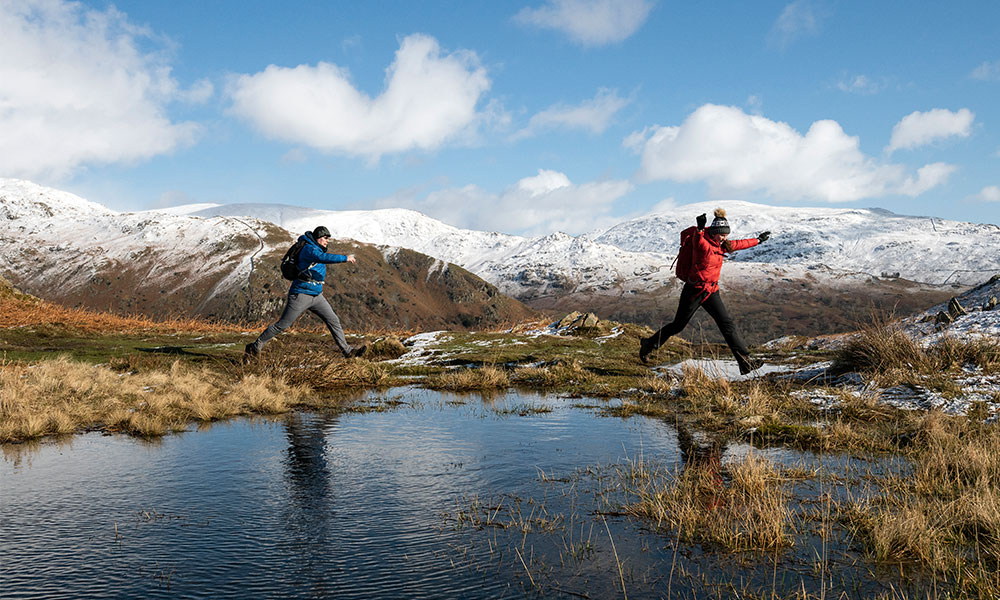
Photo Credit: Bridgedale
The amount of cushioning can vary hugely from nothing at all (liners) up to very heavy cushioning usually found in mountaineering or cold weather styles.
Choosing the right thickness should be based on things like the distance you plan to walk or the amount of impact your feet will take. Are you carrying a heavy load or running for example?
You should also bear in mind that thicker socks tend to be warmer; the loops also trap air which insulates your feet (like a fleece). It is important to get the right balance of cushioning and warmth so don’t just choose the thickest socks because you believe they will be the comfiest; you may well be right on comfort, but your feet could get far too hot leading them to sweat more and putting you more at risk of sore feet or blisters.
Good socks will feature targeted padding to help give you the best of both worlds. A thinner style will only have padding in key areas like under the heel and ball of your toes and be very thin everywhere else while a thicker style will have padding in these key areas for cushioning but will also have more ‘loops’ elsewhere else for extra warmth.
If in doubt turn them inside out!
If you turn a pair of walking socks inside out, you should be able to clearly see the number of loops and therefore where there is more padding or warmth
What’s the best fabric for walking socks?
Most modern walking socks will feature numerous fabrics, sometimes blended together, to give each sock a unique balance of comfort, warmth, durability and moisture control. Let’s take a look at the most common materials in walking socks.
Wool
Wool is very popular in walking socks because it regulates temperature well, is durable, and is naturally antibacterial. It also continues to stay warm even when wet. The most popular wool in socks these days is merino; this wool is very soft and has a great warmth to weight ratio. Merino socks will be soft against the skin and shouldn’t itch like traditional wool has the reputation for. Socks that are designed for longer distances or to be more hard wearing may also feature ‘new wool’ like Bridgedale’s Merino Performance range. This ‘new wool’ is a slightly thicker type of wool that is more durable and tends to provide greater levels of cushioning while still being soft enough against your skin.
Cotton
Now we are always told that cotton is not a particularly good material for use in the outdoors. It absorbs a lot of moisture and can get very cold when wet (jeans are a great example of this as nearly everyone has experienced wet jeans at some point). Cotton however, is very breathable and as a result can be much cooler in hot climates. While not great for most walking in the UK, socks with a high cotton content can be brilliant if you are lucky enough to be walking somewhere with a bit more sunshine.
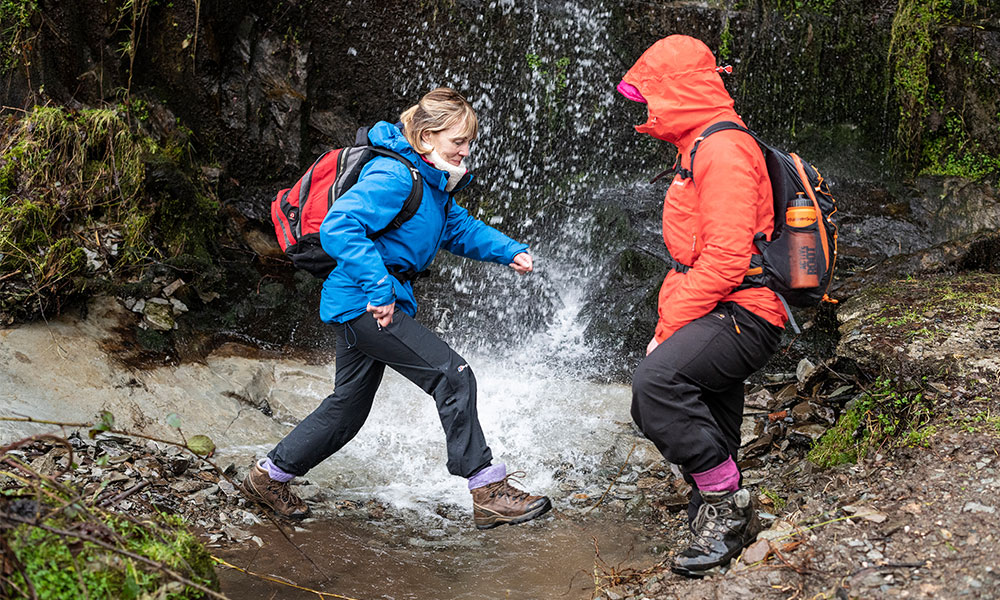
Photo credit: Bridgedale
Polyester or Polypropylene
Some socks will feature one of the above materials, but it will be blended with a synthetic fibre such as polyester or polypropylene; this helps with moisture control. Natural fibres, such as wool, tend to absorb moisture and hold on to it while synthetic fibres will wick moisture away from your feet and in theory, up and out of your boot (especially if they are long enough).
Nylon
Again, this is a synthetic fibre that is mostly used to create the structure and shape of the sock. It is like the backing to a carpet and is what the wool or other fibres will be woven through to create all the lovely loops.
Elastic
Walking socks tend to feature elastication in key areas to help with fit and to keep the sock in place, stopping them slipping down or bunching while you wear them. It also helps them keep their shape especially after washing.

Photo credit: Bridgedale

EXPLORE THE
OS Shop
We are with you every step of the way. Shop our trusted walking and hiking maps and guidebooks so you can explore the outdoors with confidence.
Go to the shopHow should a walking sock fit?
Getting socks that fit is really important, not only for how comfortable your socks are but also how well your footwear fits. To big and your socks will be loose meaning they could bunch up or wrinkle and then rub. To small and they will feel tight and restrictive and could pull themselves down.
- You should always go for a sock that is the same size as your foot (no need to size up as with walking boots for example). Most socks will have several sizes that fit a variety of shoe sizes.
- Remember, your feet will swell as you walk due to heat and pressure so you don’t want them to be too tight from the start.
- A well-fitting sock should be snug with room for your toes, a secure but not uncomfortable fit around the arch of your foot with the heel of the sock sitting nicely on the heel of your foot.
- Most brands will also produce a men’s and women’s range. While some will just base this on colour, women’s feet tend to be wider at the forefoot with slightly shorter toes, a shorter arch and narrower heel. Good brands will recognise this and design their socks accordingly.
- Although less important, the fit of the cuff can also be worth considering. If you don’t like a tight sock around your calf or upper ankle look for a style with a looser knit or level of elastication in the upper part. Likewise, if you like your socks to stay up go for something with a tighter cuff.
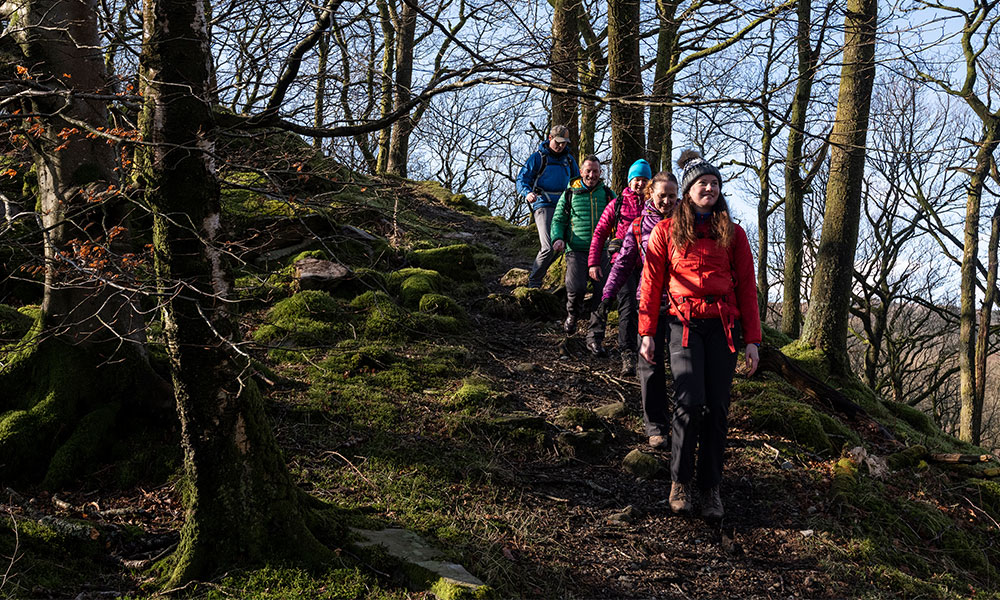
Photo Credit: Bridgedale
Do I need to wear two pairs of walking socks or one?
You may have been told when you first started walking that you should wear two pairs of socks. For years this was the case but now it isn’t strictly true. With the amount of time and effort manufacturer’s put into modern sock design, along with the materials and features sock brands use, a well-fitting walking sock from a good brand with the features above, should be all that you need.
That being said there are occasions when two pairs can be better than one…
- Liners are great for adding that extra layer of warmth or moisture management
- Liners also tend to be lightweight and small, so are great if you want to change your socks regularly; say on a very long walk or if it is hot and/or damp
- You don’t like the feel of wool next to your skin. For the reasons mentioned earlier wool is great in socks but if you don’t like the feel a liner can act as a barrier allowing you to enjoy the benefits of wool without having to feel it
- It works for you! If you have always worn two pairs of socks and it works for you why change

Photo credit: Bridgedale
One thing two pairs of socks aren’t really good for is filling space in your shoes. A bit like with fit, two pairs of socks are likely to move about, bunch up and ultimately lead to uncomfortable feet and blisters.
Now, I bet you didn’t know so much went in to making and choosing a pair of socks but as we mentioned at the start, your socks do the job of both a base-layer and insulation for your feet. Footwear gets all the glory, but socks are the real heroes when it comes to keeping your feet warm and comfortable while you’re out and about.

